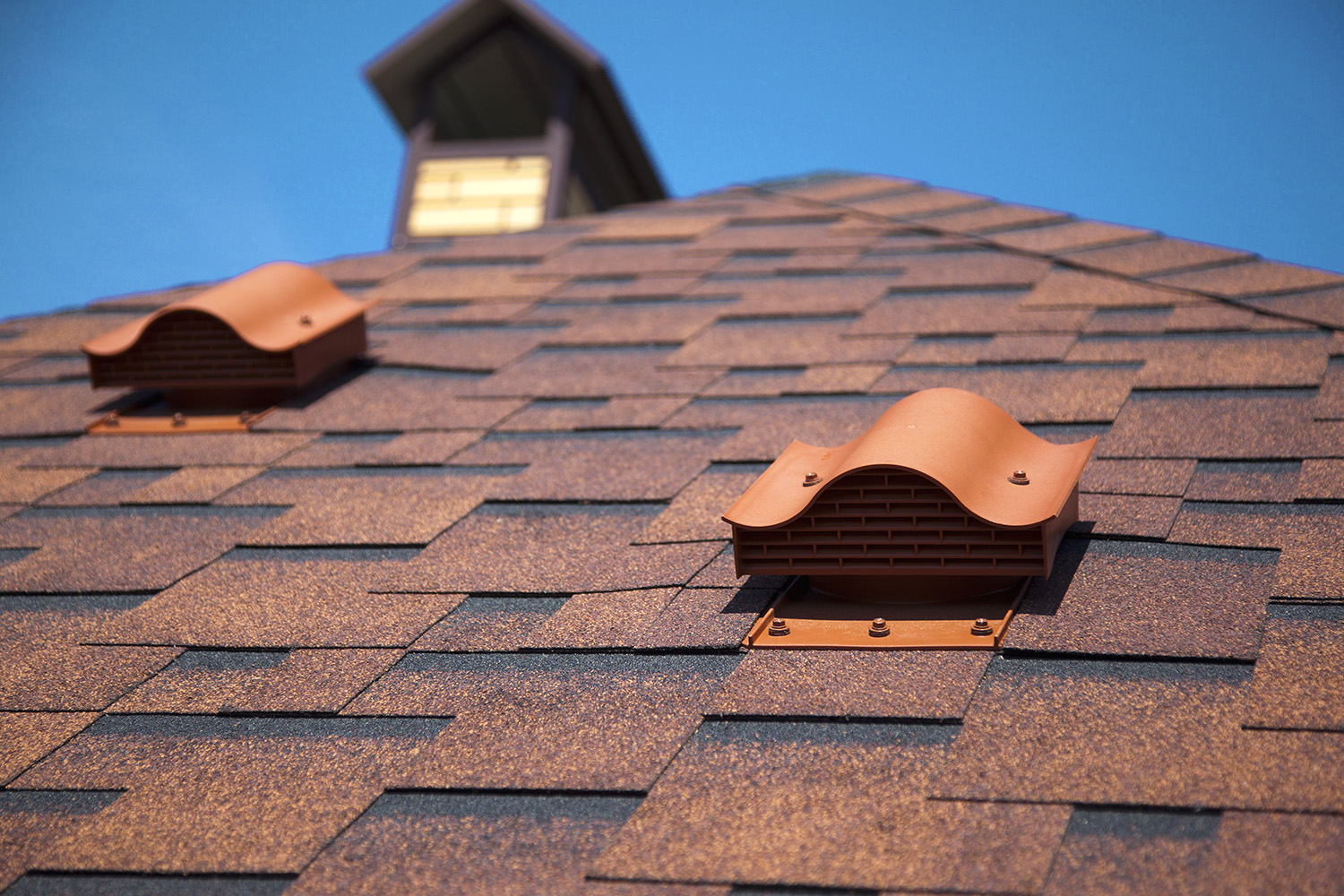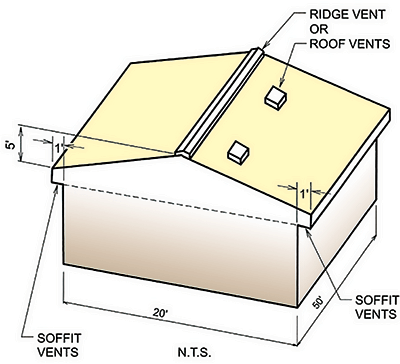Install baffles providing a minimum of 1 inch of clear space between framing and or under roof decking at eaves to ensure that ceiling or roof insulation does not block ventilation paths.
Proper roof vent spacing.
There are some styles of vaulted ceiling homes or flat roof homes that have ventilation spaces within the roof itself and no attic.
This video has examples of both static and ridg.
Roof louvers or spot vents typical 50 sq in.
The amount of space you devote to intake must be equal to the amount you allow for exhaust and these must be calculated according to the size of your attic and slope of your roof.
And this guideline you ll need a minimum of.
Near ridge of the roof.
If your roof peak runs parallel to the street put them on the backside where they ll be less prominent.
Per vent does not provide uniform ventilation between all rafter bays.
For vaulted or cathedral roof construction provide a free ventilation path from eaves to ridge between all rafters.
Vent area ranges from about 35 sq in.
Prior to installing the ridge vent a 1 inch wide strip of roof decking is cut out along both sides of the ridgeline to allow for air movement through the vent.
Proper installation number and location of roof ventilation is needed to maximize the performance of a roof.
A ridge vent is a ventilation strip that is placed along the ridgeline of the home.
Take the solution and divide it by 150.
Based on your 1100 sq.
Per linear foot covered by cap shingles est.
Place all the roof vents on the same side of the roof.
These ventilation needs are calculated differently.
The irc adds that the nfva ratio can also be reduced to 1 300 if 50 to 80 of the required ventilation is located in the upper portion of the attic or cathedral ceiling and the rest is located at the eaves with the upper vents at least 3 feet above the lower.
Conventional rigid aluminum ridge vent typical 20 sq in.
It is important that air movement occurs and is not impeded by any framing members of the home.
Measure the length and width of the attic and multiply the two together.
The final number will be the total vent space needed for your attic.




























